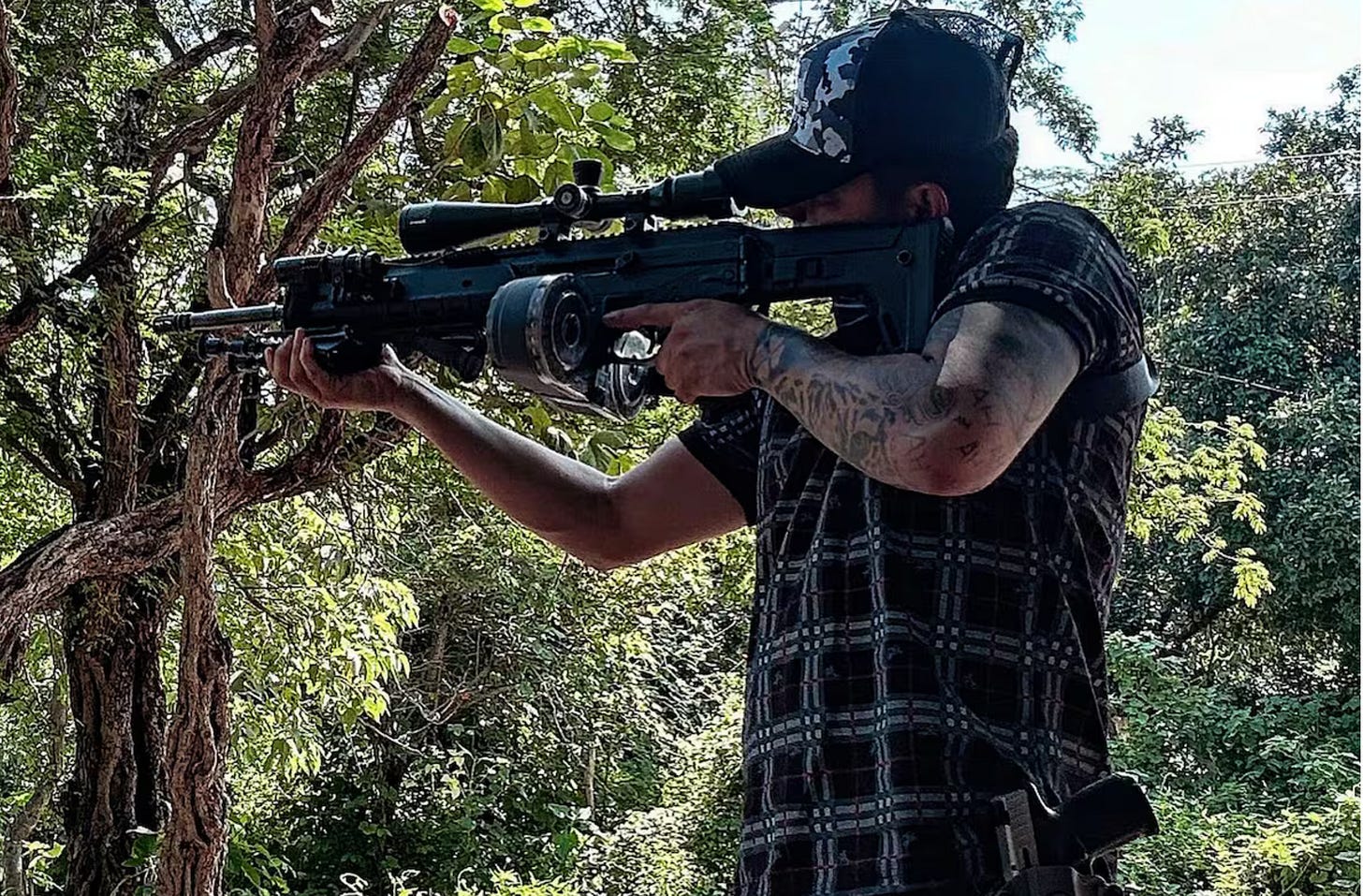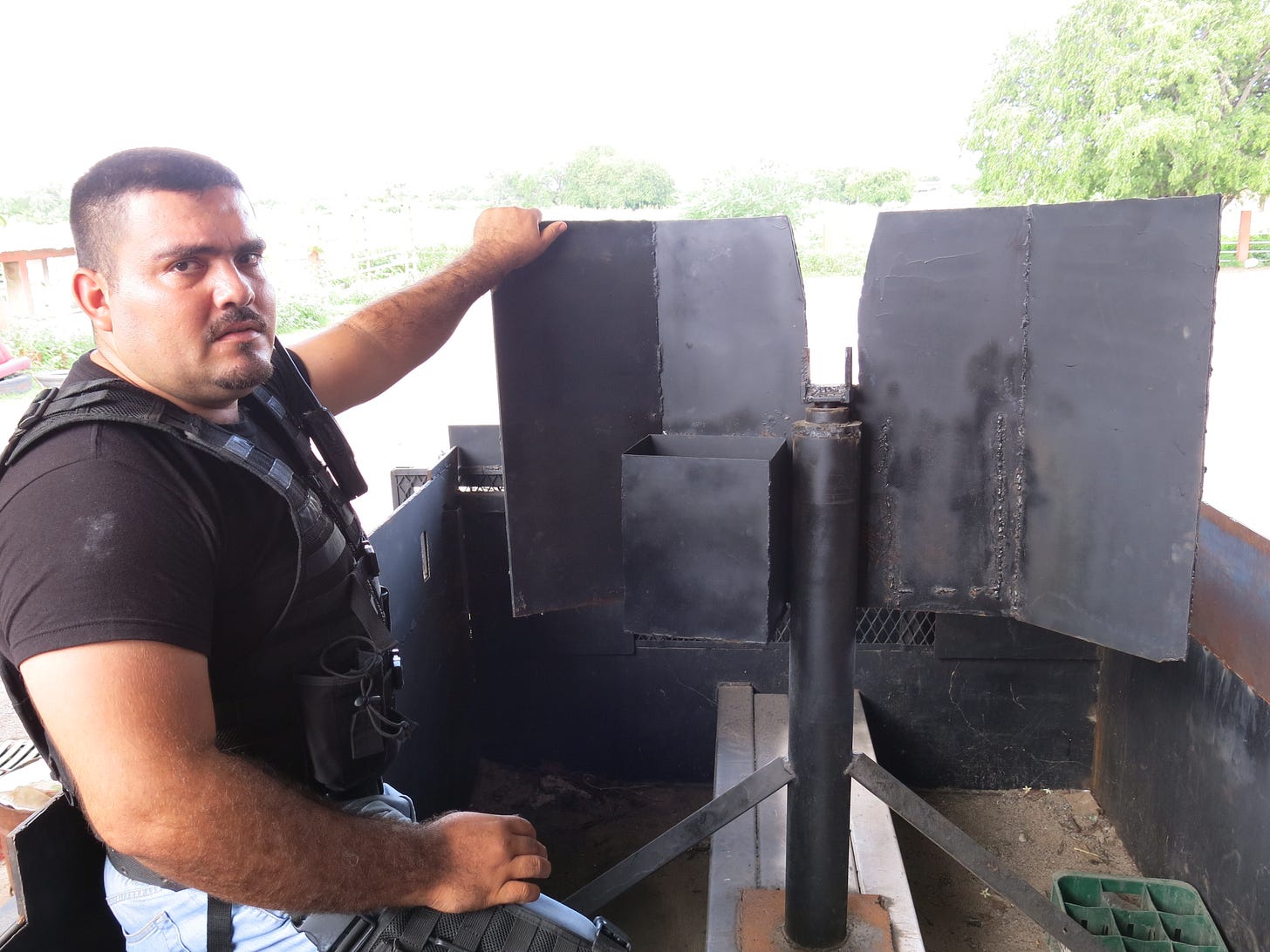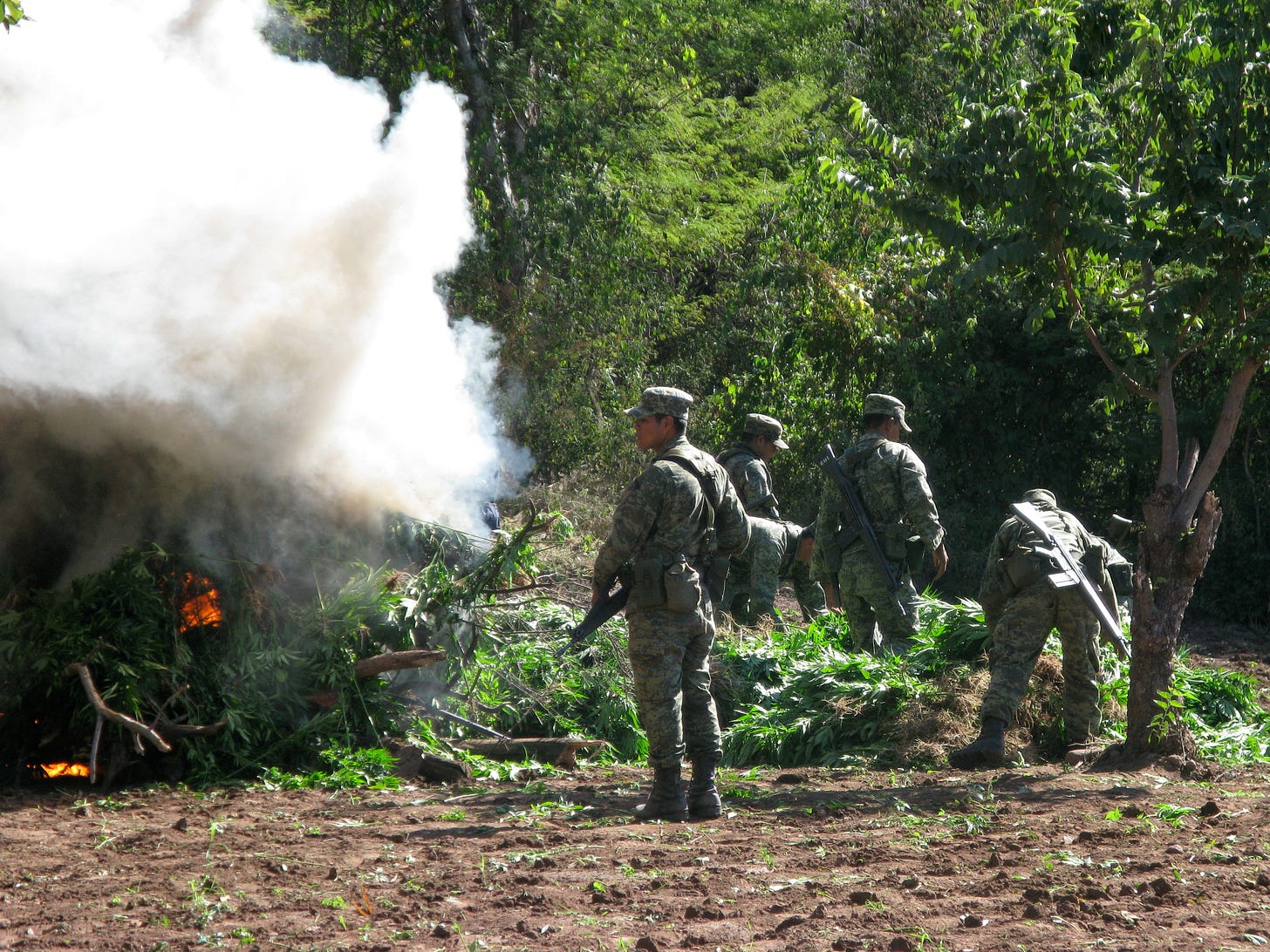What Are The Mexican Cartel Wars?
I look at how to frame the decades of narco bloodshed in comparison to other armed conflicts
Para leer en español click aquí.
In December 2006, I raced up to the Michoacán mountain town of Aguililla with a photographer and cameraman from the Associated Press to follow a mobilization of the Mexican army against meth and marijuana traffickers from the cartel known as La Familia. Pumped-up soldiers swarmed onto the ramshackle streets, lining up residents on their knees while two helicopters buzzed low over houses. The troops soon got into gunfights with Familia operatives higher in the hills, where farmers raised weed and opium poppies.
Then-president Felipe Calderón announced the offensive two days earlier on Dec. 11, calling it Operation Michoacán and saying it would involve 6,500 soldiers and federal police. The following January, he added Operation Tijuana with another 3,300 troops and gradually widened it to a national mobilization with the bulk of the Mexican army along with marines and paramilitary federal police taking on narcos.
After Calderón met with President George W. Bush, the crackdown was bankrolled by Washington under the Merida Initiative. And breaking protocol, Calderón put on an army jacket and cap in a base in Michoacán and spoke in martial terms about it.
“New pages of glory will be written. I instruct you to persevere until glory is achieved,” Calderón told soldiers in February 2007. “We will give no truce or quarter to the enemies of Mexico.”
Now over 18 years on, the Mexican army is still on the streets fighting cartels, who have diversified from drugs to a portfolio of rackets including extortion, human smuggling and oil theft. During this time, Mexico has suffered about half a million total homicides (Mexico’s statistics institute counts 486,000 between 2007 and 2024), of which about 60 percent could be by cartels and the security forces fighting them, which have also committed massacres (I’ll grind down on these numbers below).
Cartel sicarios not only wield Kalashnikovs and 50 cals (mostly from the United Sates) but build home-made fighting vehicles, or “monsters,” armored drones and improvised landmines. Self-defense militias, or auto defensas, have risen up as a third force, although they can often just be narcos in disguise.
Foreign mercenaries fight for cartels and Washington is pushing to get more involved and threatening military strikes on Mexican soil. With 130,000 people disappeared and mass graves in cow fields and ranches, mothers join brigades to search for their lost children while citizens march vainly for peace.
While this bloody mess has claimed more victims than some traditional wars, there is still debate about whether we should call it an armed conflict, and how we should understand it, or even name it. While this sounds academic, it gets heated as recognizing an armed conflict threatens legal implications for the Mexican government as well as bad publicity.
When you go to Wikipedia (for what it’s worth!), there is a page entitled “Mexican drug war,” which describes it as an “ongoing asymmetric armed conflict.” Yet when the International Institute for Strategic Studies in London classified Mexico as the second deadliest armed conflict in the world in 2017, Mexico’s foreign office issued an irate response.
“The report irresponsibly points to the existence of an “(non-international) armed conflict” in Mexico,” it said. “This is incorrect.”
It’s our job as journalists to report what is true rather than what is politically convenient. Yet there are other factors making the Mexican labyrinth tricky to frame.
As I write here, there is a paradox that much of Mexico appears largely peaceful despite the bloodshed, and when cartels control territory it’s as a shadow power rather than a full takeover. Violence encompasses everything from a war inside the almighty Sinaloa Cartel to crews of extortionists fighting over the city of Cuautla. And there are comparable problems of organized crime and militarized law enforcement across Latin America, so should we also talk about armed conflicts in Brazil, Honduras and now Ecuador?
Yet whatever words we write, real cartel convoys roll through towns and get into firefights with marines, and real innocent citizens are felled and maimed. Any future historian looking back at Mexico in the first decades of the twenty-first century will have to contend with cartels and bloodshed as a central theme.
In this piece, I pen a framework of how we can understand this period of violence, which I now think is best referred as the Mexican Cartel Wars. Revising some of the most interesting academic research and reporting, I look at when it really began, who the sides involved are, and, to offer some hope, when it may finally end.
A Hybrid Between Crime and War
I join some other writers in placing the Mexican Cartel Wars as a…
Sorry folks, you need to subscribe to read the rest of this story. But it’s only the price of a cuppa coffee and you get the complete archive including exclusive interviews with top players and maps of cartel territory. And now is a great time to subscribe as we will be following these issues with detailed reports you can trust as big things break in the coming months.




